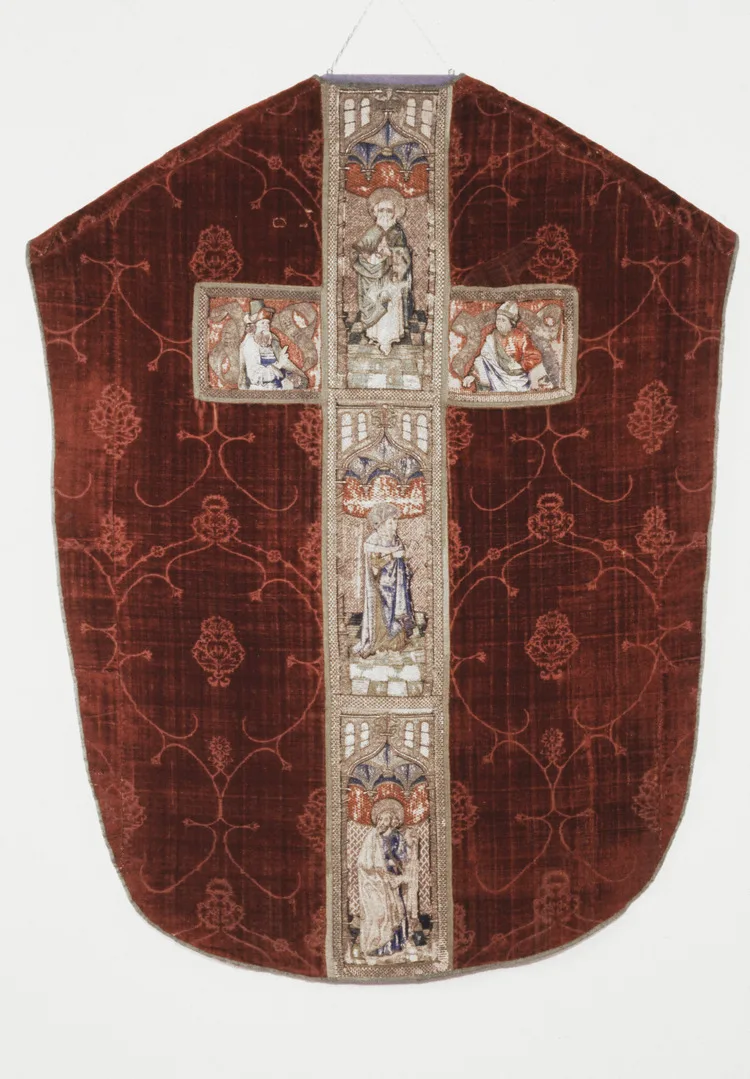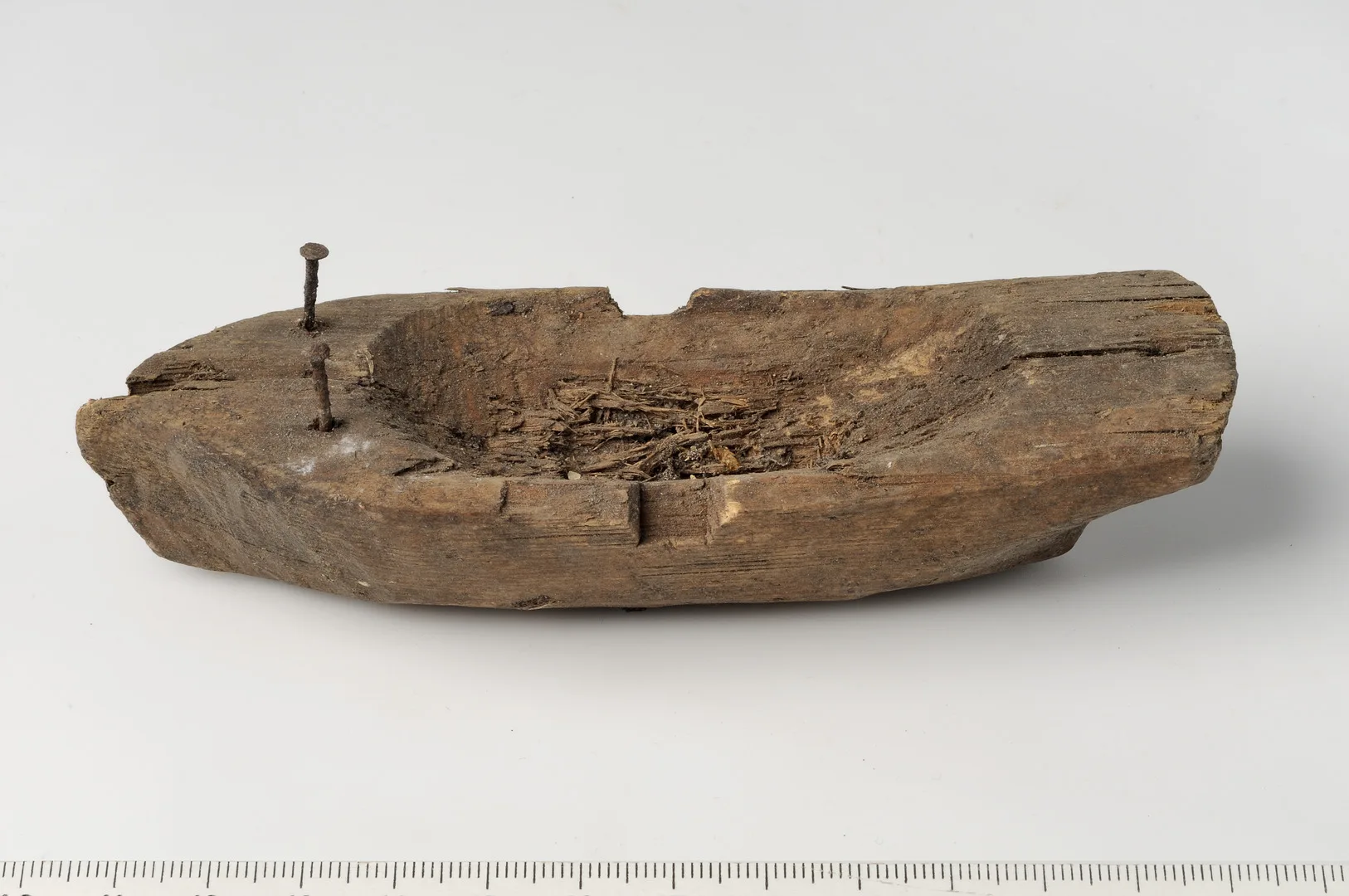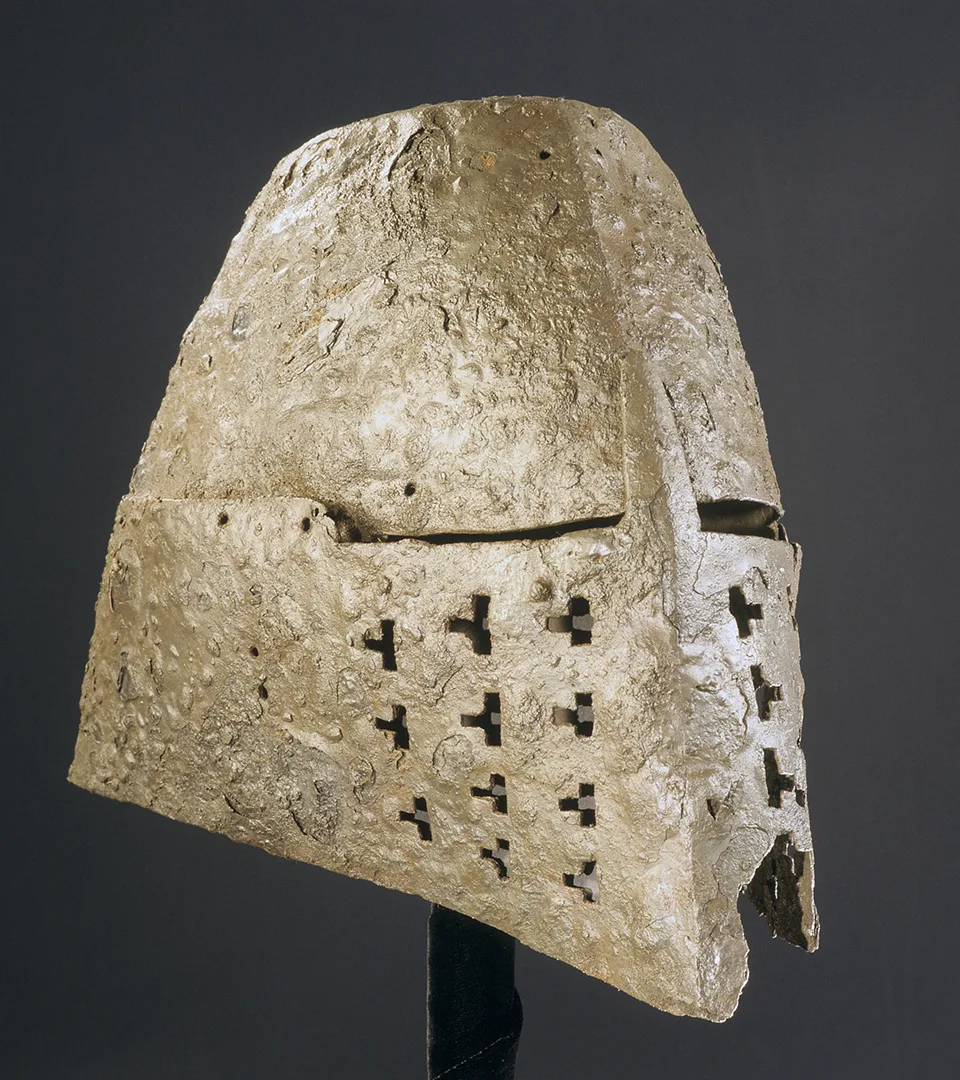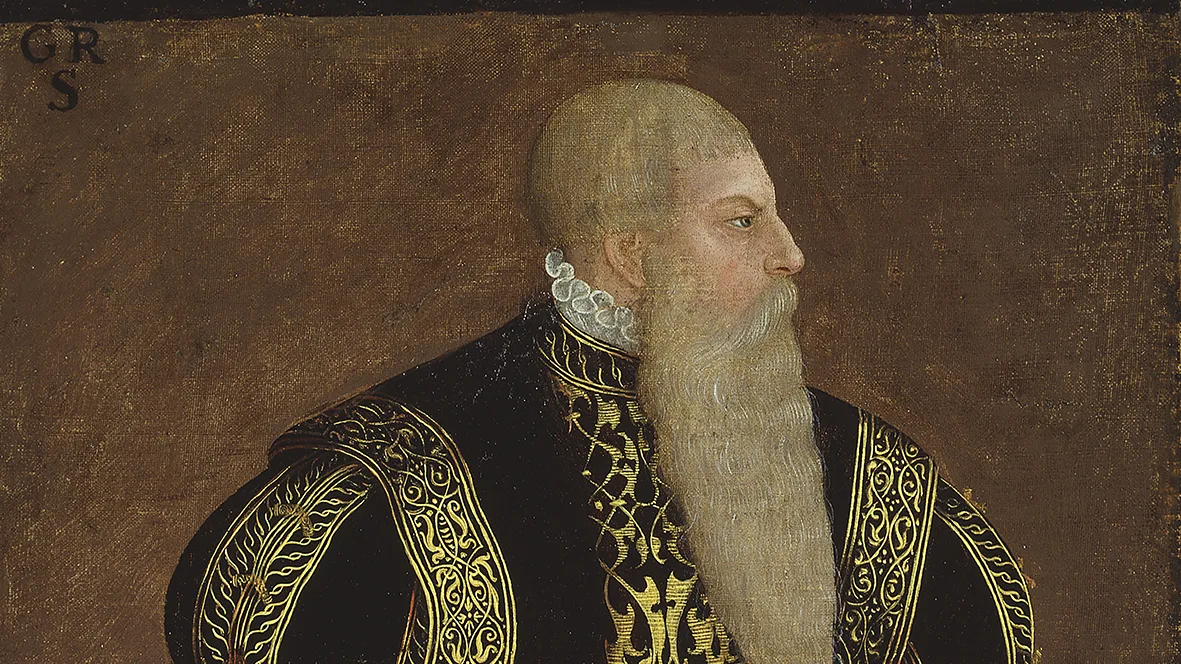Medieval textile: the pomegranate pattern
Viking Age
AD 800 – AD 1100
Middle Ages
AD 1050 – AD 1520
Modern Age
AD 1520 – AD 2025
The pattern was primarily used on various types of fabric. It could be woven into materials such as silk or velvet, but it was also printed onto cloth. These textiles were used in ecclesiastical garments, everyday clothing, and interior furnishings.
The pattern was commonly used during the late Middle Ages, which refers to the latter half of the 15th century and into the early 16th century. What the pattern was called during medieval times is unknown; the name “pomegranate pattern” emerged in Germany in the 19th century.
In medieval paintings and altarpieces, people are often depicted wearing garments made from pomegranate-patterned fabrics. Draperies and painted surfaces in the background are also frequently decorated with the motif.



Textiles from Uppsala-Näs, Hässelby and Ösmo church. Photo: Ola Myrin, Gabriel Hildebrand, The Swedish History Museum/SHM (CC BY 4.0)
Garments in the collections
One example from the collections of the Swedish History Museum is a chasuble, a liturgical vestment worn by priests over the alb and stole during the celebration of the Eucharist. It was made of silk velvet in the 15th century and comes from Hölö Church in Södermanland.

Chasuble
Another example is a cope from Ösmo Church, Södermanland. A cope is a special ecclesiastical garment used during important church services. It is often made of luxurious fabrics such as velvet or silk and richly embroidered. The cope has a semicircular shape and is fastened at the front with large, ornate clasps. The example in the museum’s collection is made of silk damask from the 15th century.

Cope
Green cope of silk damast. The figures along the edge are: Saint Peter, Saint Paul, Saint John, Saint Bartholomew, Saint Andrew and Saint Mathew.
Roots in China
The design has its roots in China. Lotus flowers and their leaves appear in Chinese textiles. The pomegranate can symbolize different things depending on cultural and traditional contexts, such as fertility and immortality.
The pattern consists of leaf-like pointed ovals. In the center of these, there is usually a pomegranate, but it could also be replaced with a pine cone, a thistle flower, or a fruit resembling a pineapple. The pointed oval’s appearance could vary from thin lines to bold vine-like branches, with or without leaves, flowers, or fruits.

Despite the pattern’s prevalence in both preserved textiles and visual depictions, it is rare to find two pomegranate patterns that are exactly alike.
The pattern is diverse. It can be delicate and intricate or bold and powerful, and everything in between. The pattern repeats could be small or span up to two meters before restarting.
The pattern did not fade with the end of the Middle Ages. It remained popular during the Renaissance, with its basic form adapted to suit the stylistic ideals of the time.







